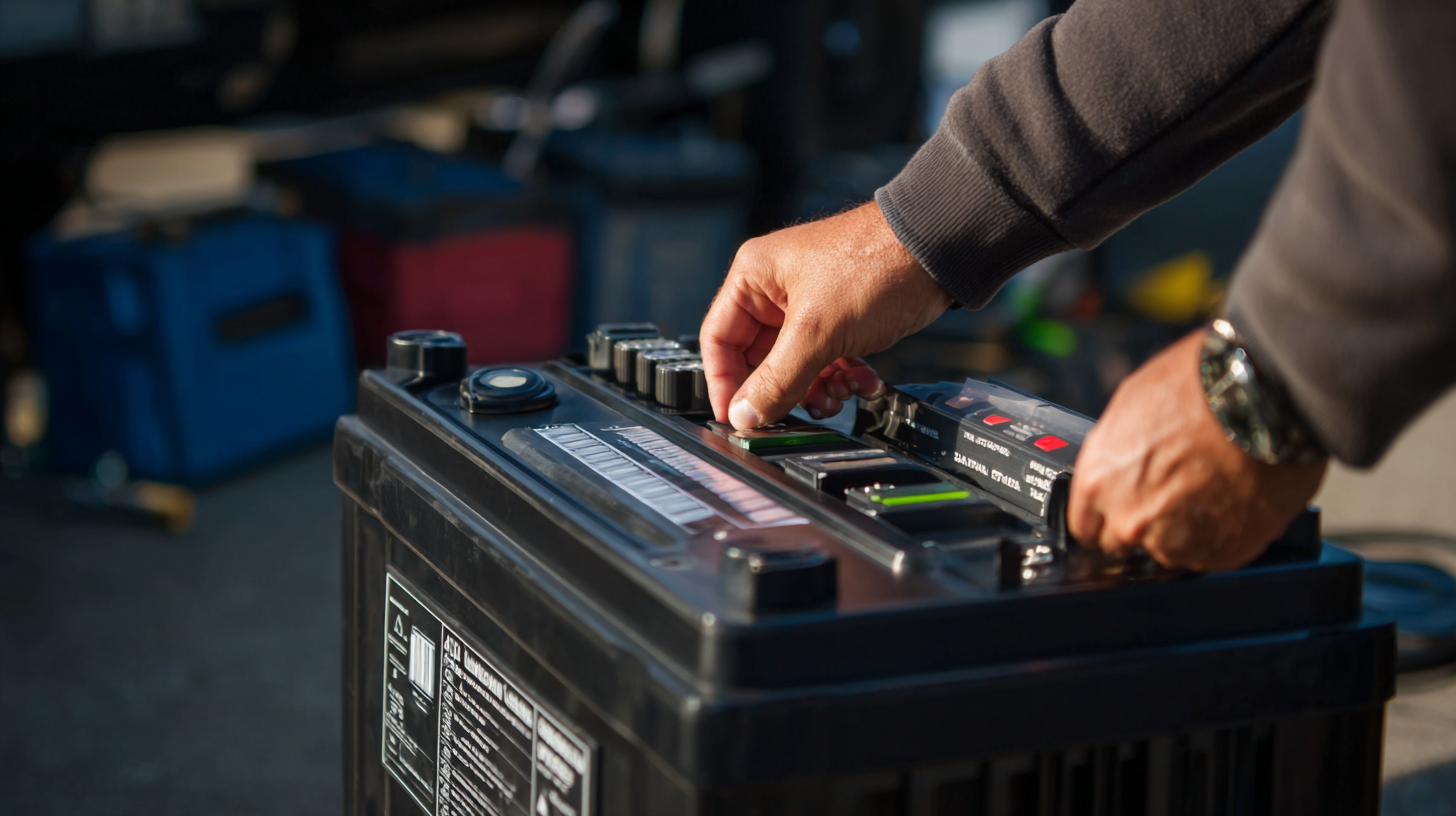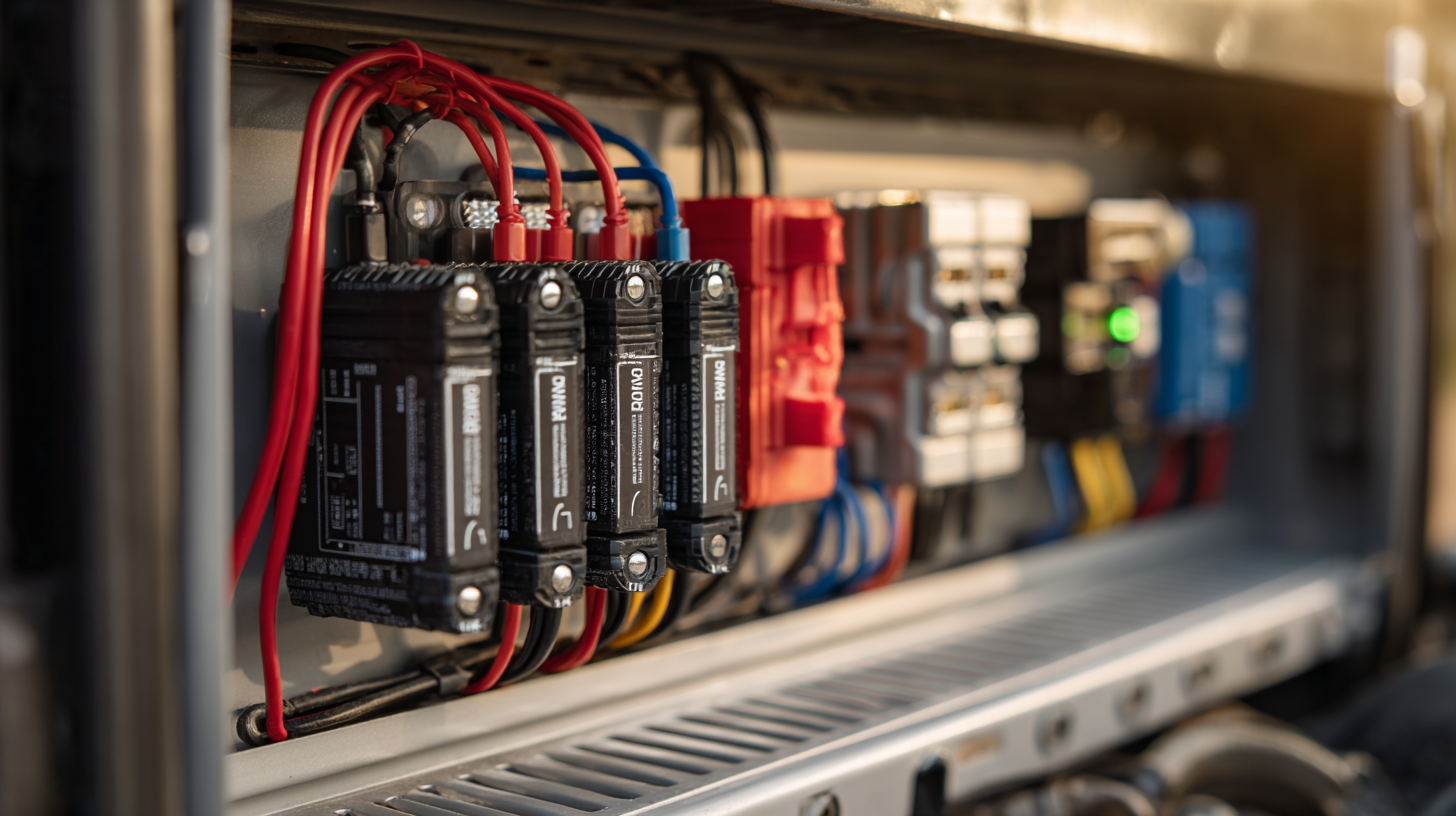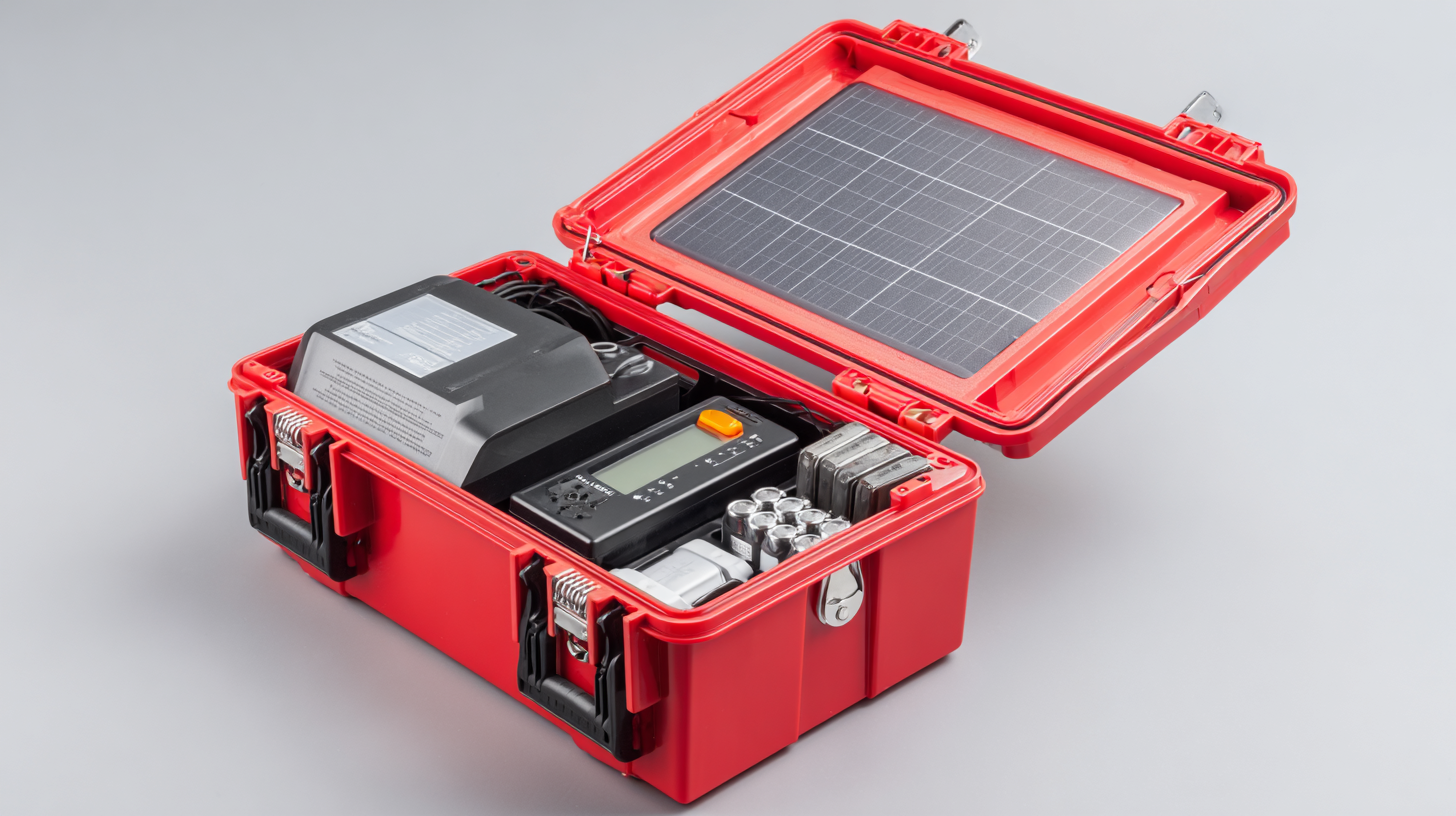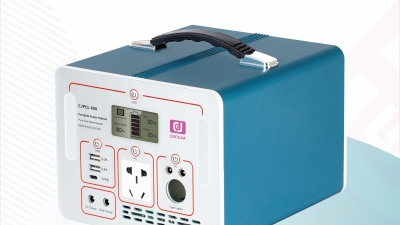How to Select the Best Battery Inverter for Your Energy Needs Based on Market Trends
Table of Contents
- Understanding Battery Inverter Types: A Comprehensive Overview of Market Options
- Key Market Trends Driving Battery Inverter Innovation and Adoption
- Evaluating Inverter Capacity: Calculating Your Energy Needs Accurately
- The Importance of Efficiency Ratings: What Industry Standards Tell Us
- Cost-Benefit Analysis: Comparing Initial Investment vs. Long-term Savings
- Top Brands and Models in 2023: Insights from Industry Market Research
- Harnessing the Future: The Role of CJPCL-600W Portable Power Stations in the Expanding Global Renewable Energy Market
- FAQS
- Conclusion
- Related Posts
 Navigating the world of energy solutions these days can be pretty overwhelming, especially when it comes to picking the right
Battery Inverter — it’s actually a pretty crucial decision whether you're talking about your home or a business.
With global electricity use expected to hit a staggering 30 trillion kilowatt-hours by 2040
(thanks, International Energy Agency!), it’s more important than ever to find reliable energy storage options.
Battery Inverters are key players here — they take the stored energy and convert it so you can actually use it effectively,
making sure your power supply stays steady and efficient. At Zhejiang Cejia Electric Co., Ltd., we’ve been in the game for over
20 years, so we really get what’s needed in today’s market. We’re dedicated to offering top-notch, competitively priced
energy storage solutions that fit a variety of needs. Our goal? Helping folks like you make smarter choices in this crazy,
complex energy landscape.
Navigating the world of energy solutions these days can be pretty overwhelming, especially when it comes to picking the right
Battery Inverter — it’s actually a pretty crucial decision whether you're talking about your home or a business.
With global electricity use expected to hit a staggering 30 trillion kilowatt-hours by 2040
(thanks, International Energy Agency!), it’s more important than ever to find reliable energy storage options.
Battery Inverters are key players here — they take the stored energy and convert it so you can actually use it effectively,
making sure your power supply stays steady and efficient. At Zhejiang Cejia Electric Co., Ltd., we’ve been in the game for over
20 years, so we really get what’s needed in today’s market. We’re dedicated to offering top-notch, competitively priced
energy storage solutions that fit a variety of needs. Our goal? Helping folks like you make smarter choices in this crazy,
complex energy landscape.
Understanding Battery Inverter Types: A Comprehensive Overview of Market Options
When you're trying to pick out the right battery inverter, it’s really helpful to understand what types are out there. Basically, a battery inverter is a device that takes the DC power stored in your batteries and turns it into AC power—that’s what your home appliances use, after all. There are a few different kinds of inverters tailored for different energy needs and setups. The most common ones you’ll hear about are pure sine wave, modified sine wave, and grid-tie inverters. Each one has its own perks—like, pure sine wave inverters are great if you've got sensitive electronics, but they can be a bit pricier too.
Now, another thing to think about is whether you want a standalone inverter or a hybrid system. Standalone inverters work totally by themselves, perfect if you're off the grid and don’t have power hookup nearby. On the flip side, hybrid inverters can connect to both your solar panels and the grid, giving you more options and flexibility, especially if you're trying to get the most out of renewable energy. Plus, with all the tech advancements these days, smart inverters are becoming a thing—they can optimize your energy use and even let you monitor things in real-time so you know exactly what's going on. Keeping these things in mind should help you choose the inverter that’s just right for your energy setup and needs.
Key Market Trends Driving Battery Inverter Innovation and Adoption
The battery inverter market is going through some pretty big changes lately, mainly driven by new tech and what consumers actually want. You’ve probably noticed that innovations like IGBTs and MOSFETs have really upped the game—making energy systems more efficient and reliable than ever before. These advancements aren’t just for one or two sectors; they’re making waves across the board, like in electric vehicles and renewable energy setups, where having a smart inverter to manage power smoothly is a total must-have.
If you’re thinking about jumping into this market, it’s a good idea to keep a few things in mind. First off, get a clear idea of your household or business energy needs. Knowing your peak power usage will help you pick an inverter that can handle your load without any fuss. Also, check if the inverter plays well with your existing solar panels or other energy sources—that way, everything works together nicely.
And don’t forget to stay in the loop with the latest trends. For example, the solar hybrid inverter market is booming—experts say it might hit around $17.24 billion by 2030. Being aware of these shifts can really help you make smarter choices, making sure you go for something future-proof that matches today’s tech and your evolving energy needs. Reading industry reports or chatting with experts can also give you a leg up on finding the best options out there.
Battery Inverter Market Trends
Evaluating Inverter Capacity: Calculating Your Energy Needs Accurately
When you're choosing a battery inverter that fits your energy needs, it’s really important to carefully figure out how much energy you'll actually use. You want the inverter’s capacity to match not just your current consumption but also potential future demands. Like, recent research shows that big solar power plants are now using smart forecasting tools to better manage their operations — so getting your energy calculations right is more crucial than ever. In fact, some predictive models using deep learning suggest that the way solar energy fluctuates can really impact how well your whole system performs and how reliable it is.
To make sure you pick the right inverter, you also need to pay attention to stuff like dirt buildup on solar panels and how temperature changes might affect efficiency. A recent study on temperature modeling found that understanding these factors can help your inverter run smoother — think electric vehicles or similar setups. Plus, having detailed, high-res data is super helpful for accurately estimating energy losses, especially in hybrid setups with solar and wind. This just shows how important it is to choose an inverter that can handle variable energy inputs while still delivering the best possible output. When you combine all these points, you'll be much better equipped to pick an inverter that genuinely fits your specific energy needs.
How to Select the Best Battery Inverter for Your Energy Needs Based on Market Trends - Evaluating Inverter Capacity: Calculating Your Energy Needs Accurately
| Inverter Type | Power Output (W) | Battery Compatibility | Efficiency (%) | Average Price ($) |
|---|---|---|---|---|
| Pure Sine Wave Inverter | 3000 | Lithium-ion, Lead-acid | 90 | 500 |
| Modified Sine Wave Inverter | 1500 | Lead-acid | 85 | 300 |
| Solar Inverter | 5000 | Lithium-ion, Lead-acid | 95 | 1200 |
| Hybrid Inverter | 4000 | Lithium-ion, Lead-acid | 92 | 800 |
| Grid-Tie Inverter | 6000 | Solar only | 96 | 1000 |
The Importance of Efficiency Ratings: What Industry Standards Tell Us
When you're shopping for a battery inverter these days, one thing you definitely want to get a handle on is the efficiency ratings. Honestly, those numbers tell you a lot about how well the inverter will perform over time. Think of it like a gauge for energy savings and reliability—so, really, it’s worth paying attention to. The U.S. Department of Energy mentions that an inverter’s efficiency can be anywhere from about 80% all the way up to 98%. That’s a pretty wide range, but it just shows how important it is to pick one that’s the right fit. The higher the efficiency, the less energy gets lost during the conversion process—that means lower electricity bills and more eco-friendly energy use, which is pretty awesome.

Plus, there are industry standards out there—like those from the International Electrotechnical Commission (IEC)—that give solid guidelines on how to judge inverter quality. For example, the IEC 62040 standard doesn’t just focus on efficiency but also calls out the importance of safety and reliability, especially if you’re using these in renewable energy systems. And here’s a trend to keep an eye on: a report from Navigant Research predicts that by 2025, inverters with efficiency ratings above 95% are going to be the main players in the market. Basically, the race for more efficient tech is heating up! So, if you keep an eye on these standards, you’re not only making a smart choice for your energy needs but also helping support a greener future. Win-win, right?
Cost-Benefit Analysis: Comparing Initial Investment vs. Long-term Savings
When you're choosing a battery inverter, it's really important to do a proper cost-benefit check. You wanna get a sense of how the initial spending stacks up against the long-term savings. Sure, picking a top-quality inverter can cost a fair bit upfront, but there’s more to consider. These advanced inverters usually run more efficiently, last longer, and often come with better warranties — all of which can save you a good chunk of change over time. Like, yes, it might feel like a stretch at first paying for a pricier model, but since it manages your energy output better, you could end up paying less on your electricity bills and spending less on maintenance down the line.
Also, it’s worth noting that the market is definitely shifting towards renewable energy and being more energy-independent. More folks are realizing that investing in a high-end inverter can actually cut costs further — especially when it helps you use solar or wind power. This means you’re less reliant on fossil fuels, which can really bring down your energy costs in the long run. Plus, with energy prices all over the place these days, having a good inverter acts like a safety net — helping you ride out future price hikes and make the most of renewable energy options. Bottom line: taking a careful look at both the immediate costs and what you’re likely to save down the road is key to making a smart choice that fits your needs.
Top Brands and Models in 2023: Insights from Industry Market Research
When you're trying to pick out the best battery inverter for your energy needs, it's really helpful to understand what's happening in the market right now. In 2023, top brands are really stepping up, focusing more on efficiency and sustainability. Companies like Victron Energy and Renogy, for example, have rolled out some pretty innovative products that suit different kinds of users — whether you're setting up a cozy home setup or going off-grid somewhere remote. These brands don't just deliver solid performance; they also pack in some pretty cool tech features that make the whole experience smoother and more user-friendly.
If you're wondering how to choose the right inverter, a good start is to get a handle on your energy consumption and peak power needs. Basically, you wanna add up the wattage of all the appliances you plan to run, then pick an inverter that can handle those surge demands. It’s also worth looking for models with smart features—like mobile apps or real-time monitoring—that can make managing your energy a whole lot easier.
Oh, and don't forget to check out the warranty and customer support. Good brands usually back their stuff with solid warranties, which shows they believe in their products' durability. Also, taking a moment to peek at reviews from other consumers can give you a real sense of how reliable and effective the inverter will be. At the end of the day, it’s all about finding a choice that works for you now and can keep up with your energy needs down the line.

Harnessing the Future: The Role of CJPCL-600W Portable Power Stations in the Expanding Global Renewable Energy Market
The demand for portable power solutions has surged as the global renewable energy market expands, with the CJPCL-600W Portable Power Station emerging as a pivotal player in this transformation. According to a recent report by Grand View Research, the global portable power station market is expected to grow at a CAGR of 10.8% from 2021 to 2028, driven by the increasing reliance on renewable energy sources and the need for reliable backup power solutions. The CJPCL-600W not only addresses the challenges associated with energy shortages but also serves a myriad of applications, from jump-starting a flat car battery to powering laptops during unexpected blackouts.
The versatility of the CJPCL-600W is one of its most compelling features. Whether for professional use at job sites or for hobbies that require power in remote locations, this portable power station excels in emergency situations. Its transportability ensures that users can easily carry it wherever they go, while its ability to recharge at home or in a car offers unmatched convenience. With maintenance-free operation, users can rely on the CJPCL-600W to provide energy that is always within reach, making it an essential tool for those navigating the complexities of our energy-dependent lives.
In an era where sustainability is paramount, the CJPCL-600W represents a shift toward more accessible and renewable energy options. As organizations and individuals alike aim to reduce their carbon footprint, portable power stations like this one are becoming integral in supporting the transition to cleaner energy. With increasing emphasis on energy independence and sustainability, the CJPCL-600W Portable Power Station embodies a practical solution that meets the growing needs of consumers in today’s dynamic energy landscape.
FAQS
: The main types of battery inverters include pure sine wave inverters, modified sine wave inverters, and grid-tie inverters. Each type has distinct advantages suited for different applications.
Standalone inverters operate independently from the grid, making them ideal for off-grid setups, while hybrid inverters can integrate with both solar panels and the grid, providing more versatility for energy use.
Pure sine wave inverters are more expensive due to their ability to provide cleaner and more reliable power, making them suitable for sensitive devices and electronics.
Innovations such as the adoption of IGBTs and MOSFETs have enhanced the efficiency and performance of battery inverters, leading to better power management in applications like electric vehicles and renewable energy solutions.
Consumers should evaluate their specific energy requirements, peak power demands, and the compatibility of the inverter with existing energy systems to ensure efficient energy consumption and integration.
Keeping up with trends, such as the growth of the solar hybrid inverter market, helps consumers make future-proof investments that align with emerging technologies and evolving energy needs.
Accurately calculating energy needs ensures that the inverter capacity matches current and future energy consumption, leading to efficient operation and reduced risks of overload.
Factors like photovoltaic soiling, temperature effects, and the integration of high-resolution data can significantly affect inverter performance and efficiency, particularly in dynamic energy environments.
Engaging with industry reports, consulting with experts, and staying updated on technological advancements can enhance consumers’ understanding and assist in selecting the best inverter options.
Conclusion
When it comes to switching to greener, more sustainable energy, picking the right battery inverter is a pretty big deal—it's key to making sure your energy needs are covered without breaking the bank. In this post, I’ll walk you through the different types of battery inverters out there, highlighting some of the cool trends that are pushing innovation and making these systems more popular. Understanding how much capacity and efficiency a inverter offers really helps you figure out what you need — so you can choose something that’ll save you money in the long run. And, honestly, doing a quick cost-benefit check can help you balance the upfront costs with the potential savings down the line, making sure you're making a smart move.
We’ll also take a peek at the top brands and models from 2023, backed by insights from industry research. With over 20 years in the game, Zhejiang Cejia Electric Co., Ltd. definitely stands out as a trusted name—offering professional-grade energy storage solutions that don’t hurt your wallet, all while sticking to high-quality standards. Staying informed about your options and the latest trends really puts you in the driver’s seat when choosing your battery inverter. So, yeah, making an educated decision just got a whole lot easier!
Related Posts
-

China's Resilient Growth Amidst US China Tariffs Spotlighting Best Miniature Breakers
-

Ultimate Guide to Choosing the Best Inverter for Your Needs
-

Global Trust Built on Excellence from China's Leading Factory with Best Terminal Box
-

The Ultimate Guide to Choosing the Best Circuit Breaker Enclosures for Your Global Projects
-

Innovative Solutions for Optimal Performance with the Best Busbar Insulator
-

Real Life Applications of Best Pure Wave Inverter and How to Choose the Right One for Your Business


